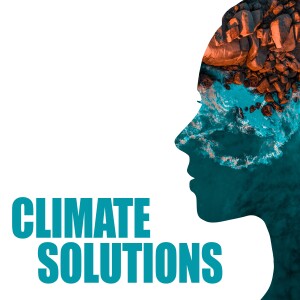
Hear how developing countries are working to protect their economies—and their people—from climate change in our climate podcast development episode
To those of us in the developed world, climate action means switching to electric vehicles, taking a bike or public transport… Or maybe eating tofu, but let’s not go there.
These are very important things to do, but they’re also what some people call “First World problems”. In the developing world, climate action means building better roads.
Developing countries need better roads to protect them against the disastrous human and economic effects of climate change that occur when roads are flooded, covered by landslides or interrupted by unusable bridges. This adaptation to climate change ensures that infrastructure and people are better prepared to cope with extreme weather and protected from its consequences.
This episode of the Climate Solutions podcast tells you what adaptation is and gives you concrete examples of how it works in projects financed by the European Investment Bank, the EU bank, in countries from Asia, Africa and Latin America.
Subscribe to the entire series of Climate Solutions from the European Investment Bank, the EU climate bank. Learn what you should do to fight climate change in the oceans, on the road, in your home and even on your digital devices.
In this episode you’ll find out:
· What is climate adaptation? Climate adaptation moderates harm or finds beneficial opportunities that result from changes in natural or human systems caused by actual or expected climatic stimuli or their effects. (You can hear some more about adaptation in episode one of Climate Solutions, which is on urban development and looks at how your city is fighting climate change with adaptation projects.)
· How long are roads meant to last? Roads are built to last from 20 to 50 years and to withstand extreme weather events that occur only once in 50 to 100 years. Climate change means that these events will become more severe and more frequent. That’s a problem in developing countries, because design and maintenance of roads are sometimes underfunded and are not always based on recent extreme weather predictions. At the same time, existing infrastructure may degrade faster due to harsh weather conditions, resulting in the need for earlier upgrade and replacement.
· What is capacity building? Capacity building is the process by which skills, experience and technical and management capabilities are developed. Capacity building is often the result of the something called technical assistance, where international organisations give advice on how to prepare projects, so that they can then get funds from banks and other development institutions.
If you’ve got something to say about climate in general or this podcast in particular, let me know @EIBMatt on Twitter. And don’t forget to subscribe to Climate Solutions.
Hosted on Acast. See acast.com/privacy for more information.
More Episodes
 2023-11-14
2023-11-14
 2023-11-11
2023-11-11
 2023-11-07
2023-11-07
 2023-10-28
2023-10-28
 2023-10-24
2023-10-24
 2023-10-21
2023-10-21
 2023-10-17
2023-10-17
 2023-10-14
2023-10-14
 2023-10-10
2023-10-10
 2023-10-06
2023-10-06
 2023-10-03
2023-10-03
 2023-09-20
2023-09-20
 2023-09-15
2023-09-15
 2023-09-01
2023-09-01
 2023-08-25
2023-08-25
 2023-08-04
2023-08-04
 2023-07-28
2023-07-28
Create your
podcast in
minutes
- Full-featured podcast site
- Unlimited storage and bandwidth
- Comprehensive podcast stats
- Distribute to Apple Podcasts, Spotify, and more
- Make money with your podcast
It is Free
- Privacy Policy
- Cookie Policy
- Terms of Use
- Consent Preferences
- Copyright © 2015-2024 Podbean.com






